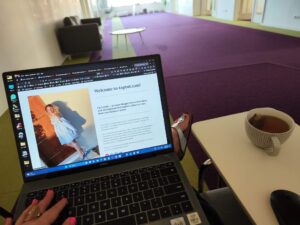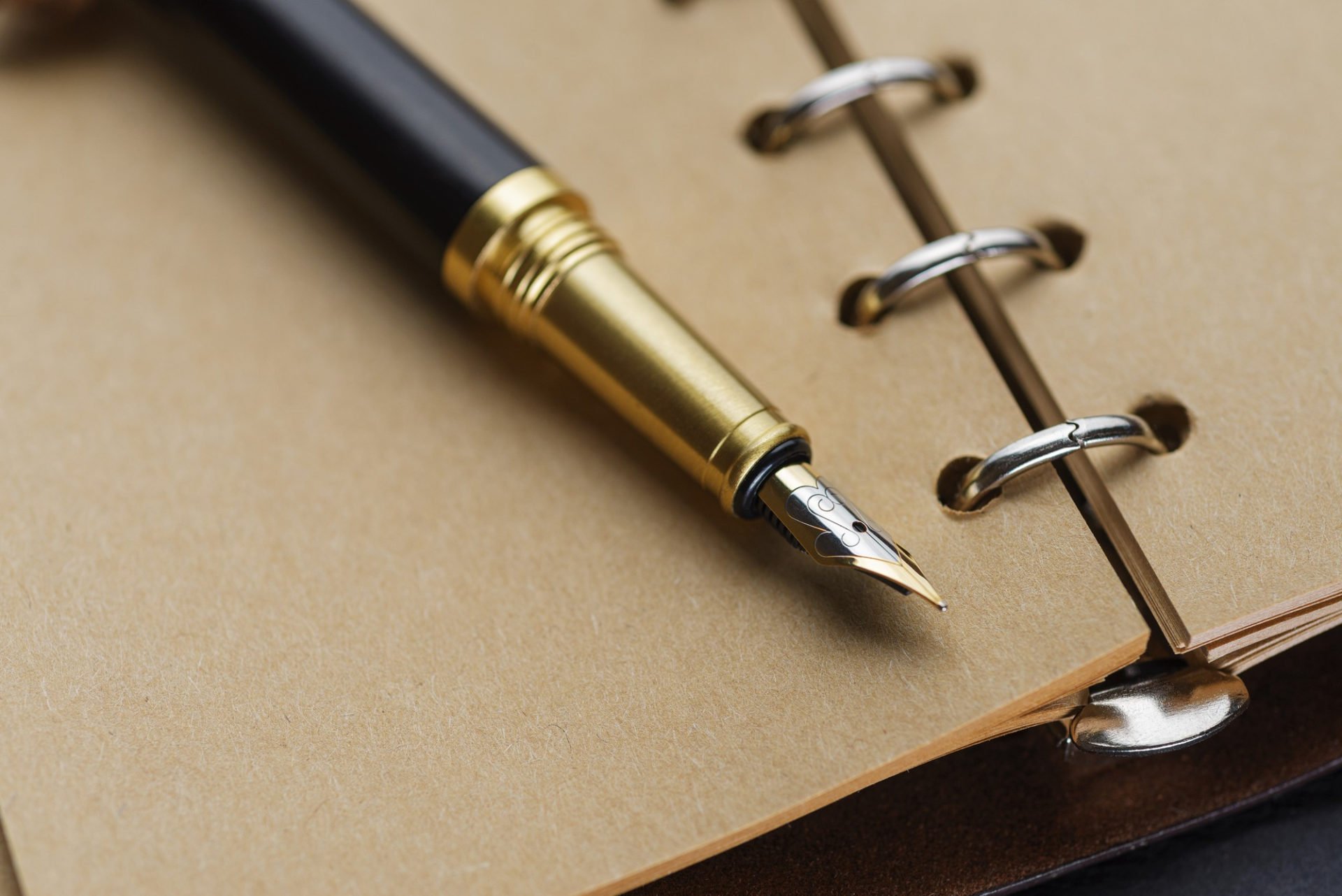Fans of the Bullet Journal, a cult notebook-organization method that has been tagged in over eight million Instagram posts, will tell you that there are two types of notebook people: those who keep multiple notebooks and those who keep just one. Most of us are multiple-notebook types who spend our lives haphazardly, scribbling things down as we go: a notebook for the office, another for shopping and appointments, one for fantasies and doodles, and one for secret rants.
The person with multiple notebooks keeps a wall calendar, a desk calendar, and two calendar applications. She has a list of movies to watch scribbled on a sticky note that she will never find again. She has a mysterious app full of asides (“Rice bowls,” “Bat chamber”). She has no idea where her bank account information is. The multiple-notebook user exists in an organizational purgatory. Her intentions are genuine, but her approach is deviant.
Ryder Carroll, the thirty-nine-year-old digital designer who designed the Bullet Journal, used to have several notebooks. He was a squirmy, preoccupied child, constantly behind and anxious in school, born in Vienna to American teachers. He was diagnosed with ADD as a teen. He began to invent minor writing tactics to help him get through his classes; in college, at Skidmore, he carried around six notebooks to keep track of everything. He also enjoyed scrapbooking and creating collages.
He began writing down his thoughts in brief bursts throughout the day and discovered that it soothed him, allowing him to look beyond his fears to their underlying roots.
“When there’s a barking dog outside, you can’t hear anything else. However, when you go to the window, you recognize something is wrong, you think about it, and you understand the context.” It is yelping at something. You actually stand up and look. And writing is that process for me.”
Carroll worked for media businesses in New York following college, taking night years in Web design. “That’s when the Bullet Journal truly began to come together,” he explained. He lost weight and sorted his books. He discovered that several of his coworkers kept journals as well, albeit infrequently. “I was like, yeah, well, I uniquely utilize my notebook,” he explained. In 2013, he spent one week creating a website and filming a video to describe his process. He hoped to “avert a lot of the heartache I had to go through to figure this out on my own,” he said.

The end product was a series of organizational instructions for the notebook, a la Marie Kondo. Simply put, you take a journal, number the pages, and construct an index to help you find everything.
From there, you may create a simple calendar, list chores, and keep a diary. Bullet Journaling—or BuJo, known online—has its lexicon, similar to CrossFit, Paleo, and other hyper-efficient societies. Bullet Journalists are those who identify as such. A daily log, a monthly log, and something called a future log is all available.
There are symbols for notes, events, and tasks and additional symbols for when a task has been finished, planned, moved to another section or declared irrelevant. (The approach gets its name from the bullet point as well as the word’s speed connotation.) There are collections of relevant stuff, such as languages you’ve never learned or kilometers you’ve never run.
There are trackers for everything you want to track: sleep, workouts, emotions, and alcohol. You practice “quick logging” every day. In a spine-straightening process known as migration, you go over everything you wrote down each month and move only what is relevant to the next monthly spread.
Carroll’s video was taken up by productivity blogs and quickly became popular. After a few years, Bullet Journaling has developed into a global community, with subcategories of every variation:
- BuJo for students,
- BuJo for mothers,
- BuJo for veterans,
- and #menwhobullet.
It has gained popularity on the Internet as a kind of mindfulness-meets-productivity trend that associates orderly journaling with an ordered interior existence. It offers to assist you in reaching your goals and decluttering your mind.
Carroll published “The Bullet Journal Method” in October of last year, and it has since become a best-seller. He no longer keeps multiple notebooks (and he no longer needs other jobs).
“Having a single source of truth is beneficial. For me, that’s what the Bullet Journal is.”
I met Carroll at the Morgan Library & Museum in Manhattan on a scorching July day. He’d been on a book tour since October, first in the United States, then in Europe, and lastly in Asia. I arrived slightly late, out of breath and agitated from the heat, to find him peacefully reading a novel in the museum’s foyer.
He was dressed in a black dress shirt that was fully buttoned and square tortoiseshell glasses. When I approached, he slipped his book into a practically empty leather satchel and carefully marked his page with a bookmark. How did he spend his morning? He deliberated over the subject. It had been enjoyable, he said. He had been taking care of himself.
He’d come to visit a Walt Whitman show. We discovered modifications to Whitman’s poem “Mannahatta” scribbled on a scrap of paper within. “There’s something about handwriting that allows you to see a completely another side of a person,” Carroll observed.
He claims that he alternates between four or five different handwriting scripts according to his mood (block letters for information, cursive for emotions) in his personal notebook. Carroll analyzed Whitman’s loose signature in an 1863 edition of “The Odyssey of Homer.” “His letters have really wide curling,” he observed.
Whitman was a multi-notebook, a rambunctious and disorganized note-taker. “He would scribble on paperwork—legal forms, tax forms,” Sal Robinson, curator of the Morgan display, subsequently explained.
“He was sort of drenched in the paper” as a clerk and then as a newspaper editor. “There are these photographs of him just sitting in his chair with paper up to his knees.” Carroll and I discovered a small journal beneath a wall text reading in the show’s second half. “A vital clue to Whitman’s evolution can be found in this simple notebook.”
Several sample lines for “Leaves of Grass” were on the pages, in which Whitman experimented with employing the ‘I’ that distinguishes most of the poem. “That’s one of the amazing things about seeing ancient notebooks,” Carroll continued, awestruck. “It’s similar to the origin of thought.” That’s when it happened, that’s when it became a thing in the world.”
Bullet Journalists are more likely to drown in a sea of Instagram posts if Whitman drowned in paper, where BuJo has flourished. Bullet Journaling, like many other social media phenomena, has a performative component. Some of the more attractive posts give the impression that it took longer to make the to-do list than it did to finish the to-dos.
A hand-drawn map could be included on a page designated for a vacation packing list. A little pocket of seeds may be found on a page detailing duties for a backyard repair.
Authenticity, on the other hand, is highly valued in the BuJo community. Nicole Barlettano, a graphic designer and illustrator from New Jersey, has a hundred thousand followers on her BuJo Instagram account @plansthatblossom, where she holds a doodle contest and chronicles her behaviors in decorative spreads. “I don’t sugarcoat anything,” she explained.
“I’m not going to hide the fact that I didn’t floss all week.” BuJo posts are frequently photographs of diary entries, lending them a weird closeness. “Struggling with acne breakouts, but was able to keep it under control,” one user’s skin-care tracker says. “Not eating dairy = beneficial!” An allergic response to shrimp is described on a page with a background of vintage ticket stubs.
The pure delight in paper goods on show, albeit in a virtual medium, is one of the more endearing features of BuJo. Madeline Stone, a twenty-four-year-old project manager from Bellingham, Washington, operates the Instagram account @whiskeymug, which describes herself as a “coffee-fueled bookworm & collector of days.”
Carroll’s instructional video, in which just his hands and notebook are visible, taught her how to Bullet Journal. (Many Bullet Journalists employ this format in their own posts, branding their hands with rings or nail polish.) Carroll informed me that during book tours, BuJo influencers would approach him and show him their hands.
“That’d be the only time I’d know who they are,” he explained.) Stone’s spreads are adorned with line drawings of common objects such as sweaters and mason jars. “Handwriting is incredibly soothing to me,” she explained. “I’ll print small square photos to tape into the journal.”
The true allure of BuJo is the illusion of control it provides; everyone may be saved.
“I just like ticking things off a list,” said Barlettano. “I used to put items on my to-do list after I finished them just so I could cross them off.” Mark Figueiredo, a creative director at a Maryland investment business, administers the Instagram account @menwhobullet, which he founded as a resource for male Bullet Journalists who want to get organized.
“I just wanted to establish a platform to help other males because planning is frequently perceived as a feminine thing,” he explained. Stone, of @whiskeymug, was busy remodeling a fixer-upper with her partner and had chosen a new theme for her monthly spread when I chatted with her. “I’m thinking of progress,” she explained. She’d secured an original poem using washi tape at the bottom of the left-hand page.
In the afternoon, Carroll pulled out his own damaged notebook, a special-edition BuJo Leuchtturm in black, over a seltzer with lemon in the museum café. It was plastered in stickers from his recent book tour, which took him to Austria, Japan, Morocco, and China. “I made my Bullet Journal into a suitcase,” he explained.
He owns twenty-eight used Bullet Journals at home, dating back to just after he graduated from college. (A flood in his Brooklyn flat ruined a few earlier iterations.)
He opened his notebook briefly at one point to expose a spread of clean block text in a minimalist grid pattern. “I’m not going to take you on a tour of the inside because I’m one of those people that keeps it for everything,” he explained.
Carroll’s book arose from his attempt to explain aspects of BuJo that had nothing to do with productivity. “The purpose of the Bullet Journal approach is to help us become mindful of how we spend our two most valuable resources in life: our time and our energy,” he writes. (The book begins with a Venn diagram depicting “productivity” and “mindfulness,” with “intentionality” in the center.)
He told me that in the beginning, the most common questions he had from Bullet Journalists were technical in nature: “How many collections can I build?” Should my writing be functional or ornamental? They then became more existential. “People would ask, ‘What is a meaningful goal?'” he explained. “It’s a lot more difficult question, but one that occupies me all the time.”
I’d brought my own notebook, a turquoise Moleskine with a bright yellow band down the side. I bought it two years ago in a frenzy of hope (Those colors! That yellow band! Surely! ), and it has refused to become organized ever since, with the stubbornness of a cute but petulant kid. My demand for the order has just become more pressing.
I was relocating to a new country, looking for an apartment, applying for a visa, arranging a wedding, and dealing with a difficult medical condition. My life was in shambles. I rummaged through my jumbled notebook for Carroll, who appeared pale.
“Do you make use of the dash-plus system?” he questioned, hopeful, his gaze drawn to a plus sign next to a note regarding thank-you cards. No, I did not.
“All right,” he replied.
I’d brought a brand-new notebook with me, dark green with lined pages. (“I prefer dot-grid, but you may use whatever works best for you,” Carroll explained.) He assisted me in setting it up over the next hour.
“The Bullet Journal is designed to embrace life’s craziness,” he says. We created a meta page with my journal aims and a “brain dump” for anything on my mind. He had me create bullet points instead of checkboxes for tasks because “things aren’t binary; they begin, pause, resume, and get moved,” he explained. We discussed the BuJo habit of “A.M. and P.M. reflection,” which involves going over the day’s notes. “Lists aren’t only things we have to do for us,” he explained. “Each task is an opportunity to create an experience.” He pointed to my to-do list. “This is the substance of your possible future.”
When I looked at it, I had a sudden, mournful insight about how this would all play out: a rush of resolve, a trial period that devolved into sloppiness, and a return to my multiple-notebook days. Or perhaps not. Perhaps this time…
Carroll’s voice was a little hoarse, and it was becoming late. We began to pack stuff. “I prefer to describe what I do as giving individuals an empty house to fill with their own life,” he stated as he walked away. “Only add what you need, and be patient with yourself because this is a new thing.” You’re not doing it correctly; you’re not doing it incorrectly; you’re simply figuring it out as you go.” He took a breather. “It’s another reason I like the notebook,” he explained. “It’s as if every day is a new chance.”
Guest Post by Pauline Vermik from designyourdiary.com
Data analytics expert. As an analyst and project manager, I have proven to be a strong leader and team player in maintaining a suitable workspace for workers and industries in the oil and gas sector.
By taking into account various factors, with the assistance of state of the art technologies and the utilization of Big Data Analytics.
This includes considering various aspects like volume, velocity, variety, veracity, value together with complexity.
With the recent advent of data recording sensors in exploration, drilling, and production operations, oil and gas industry has become a massive data intensive industry.






